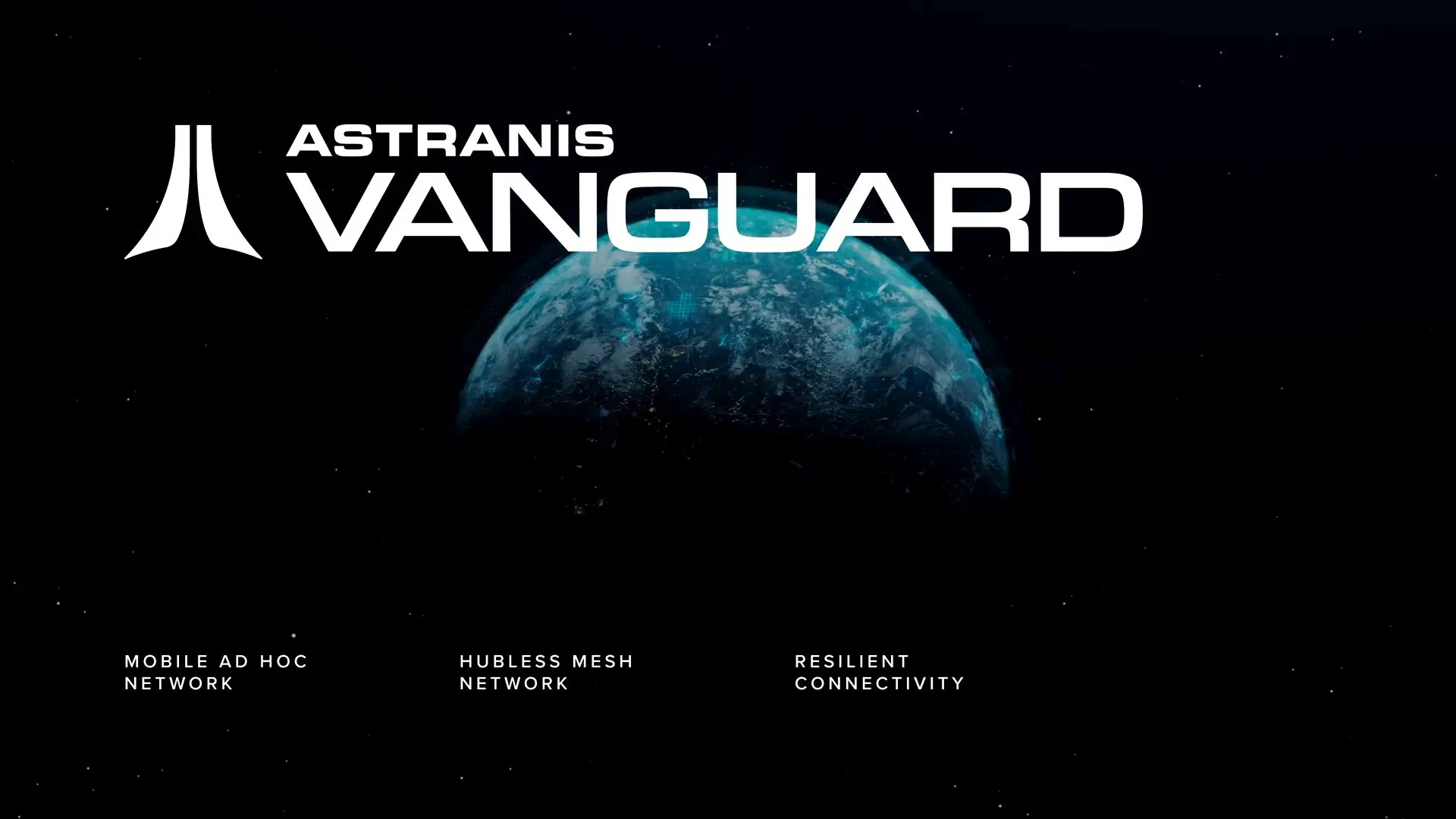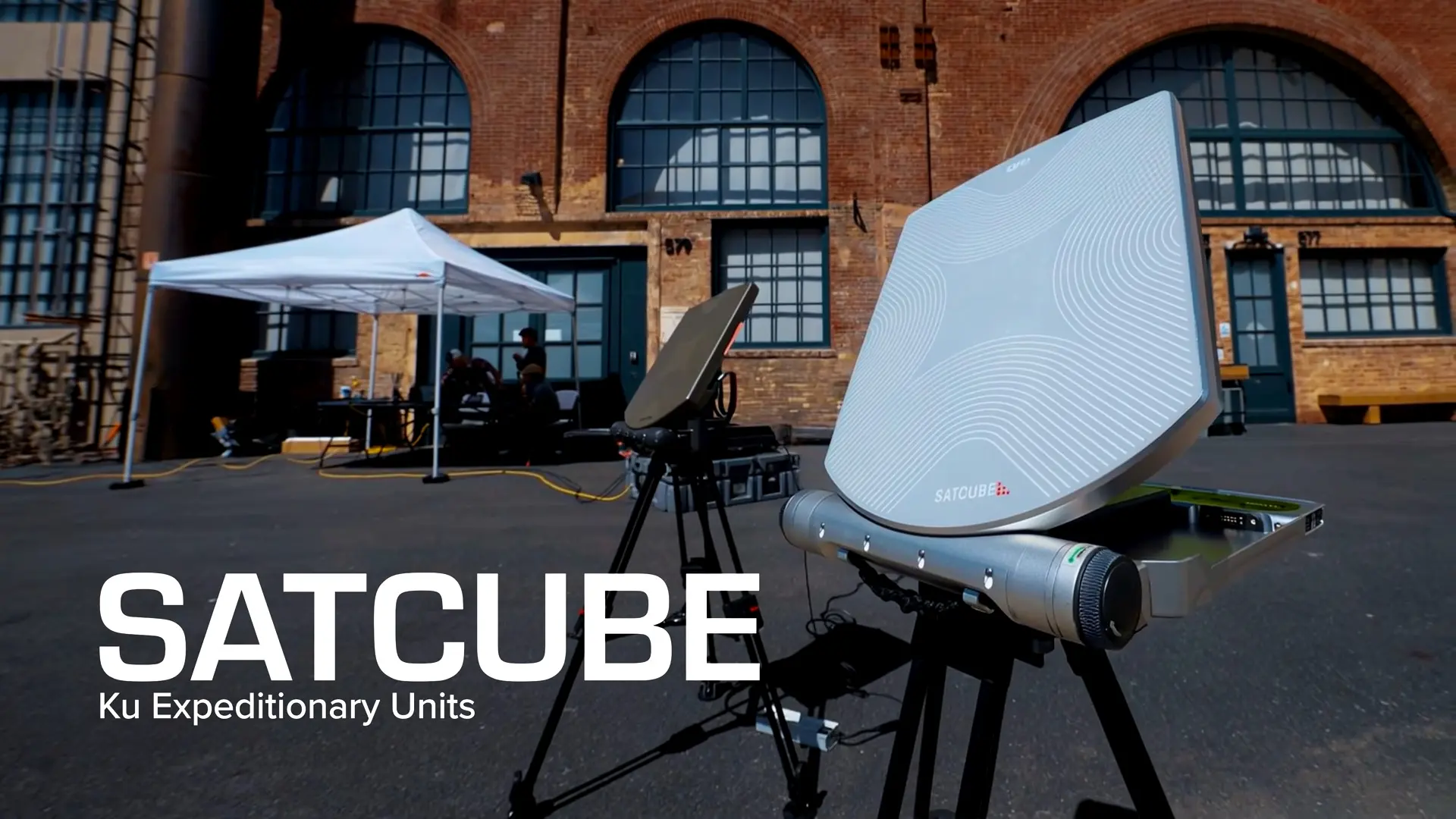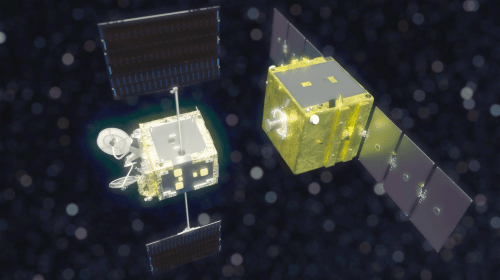How GEO Satellites Create a Game-Changing Network?
Nov 11, 2025
Astranis has recently unveiled Vanguard, a groundbreaking mobile satellite network product that represents a significant leap forward in beyond-line-of-sight communications technology. The announcement, made in early November 2025, introduces a fully air-gapped, rapidly deployable network designed specifically for defense and disaster response applications. This innovative system combines Astranis’ geostationary orbit satellites with specialized terminal equipment from industry partners Kymeta and Satcube, along with networking solutions from Persistent Systems. The company has already validated this capability through a live demonstration using an operational satellite asset in orbit, proving that the technology is not merely theoretical but ready for real-world deployment.
 Astranis Vanguard mobile satellite network promo. Credit: Astranis
Astranis Vanguard mobile satellite network promo. Credit: Astranis
The evolution of Vanguard as per Astranis leadership is one that covers an old consumer necessity which has defined the customer base in both military and the business markets. The product symbolizes the result of collaborative efforts that could not be achieved without attentive fusion of already tested equipment that has already been introduced to warfighters, first responders, and enterprise clientele across the globe. The most interesting fact about Vanguard is that it uses the actual hardware, which has already been tested in the market instead of implementing completely new technologies that have not been validated. This will greatly minimize the likelihood of adoption and shorten the time to market of an organization that desires better means of communication within a problematic environment. The fact that this is a market driven innovation is underlined by the fact that the company has realized that the customers have been requesting this capability.
Technical Architecture and Demonstration Success
Vanguard is based on the technical basis of a complex combination of satellite and ground-based communications infrastructure. Fundamentally, the system makes use of an operational Astranis satellite that is in geostationary orbit and connectivity is handled by the onboard software-defined radio facilities of the satellite. Such a solution offers greater flexibility like never before, with the satellite itself remaining flexible to network requirements, instead of responding to them using inflexible, pre-programmed communication protocols. It was demonstrated that a Mobile Ad-Hoc Network could be implemented with Persistent Systems, Wave Relay MANET routing algorithm together with MPU5 broadband radios that special operations forces frequently employ to communicate on a tactical level. This combination of technical elements creates an automatically routed network that directs data along numerous routes to provide network resilience and redundancy in the event that particular connections are damaged or lost.
 Kymeta U8 Vehicle Mobile flat-panel antenna. Credit: Astranis
Kymeta U8 Vehicle Mobile flat-panel antenna. Credit: Astranis
The physical terminals in the demonstration are one of the vital components of Vanguard in its practical attractiveness and market preparedness. The flat-panel user terminals offered by Satcube will offer stationary communication features whereas the on-the-move terminals of Kymeta will allow the users to communicate through their mobile platforms, be they mounted on a vehicle or carried by an individual. Both forms of terminals are directly linked to the Astranis satellite to offer backhaul and increase the range of the network beyond the traditional line-of-sight capabilities. These terminals were also able to send video feeds, voice communications and IP traffic over the satellite connection during the live test, showing that the system was capable of supporting the provision of different types of data at once. The success of this demonstration shows that Vanguard can extend the distances of operations of Persistent Systems MPU5 radios by far more than can be done using terrestrial techniques alone, making it possible to have secure communications at much greater distances.
Defense and Emergency Response Applications
The defense sector represents one of the most compelling use cases for Vanguard, where commanders can maintain command-and-control and situational awareness in austere or contested environments where traditional infrastructure may be compromised or unavailable. Military teams deploying with mobile terminals can extend connectivity beyond line-of-sight without requiring reliance on central hubs or pre-existing infrastructure, which represents a substantial tactical advantage in remote or hostile territories. The air-gapped nature of the system means that communications remain completely isolated from public networks, eliminating vulnerabilities associated with shared infrastructure and providing the security assurances that defense operations demand. Furthermore, the ability to rapidly establish resilient networks gives military commanders flexibility in deployment strategies and operational planning that was previously constrained by communication limitations.
 Satcube Ku Expeditionary Units. Credit: Astranis
Satcube Ku Expeditionary Units. Credit: Astranis
Beyond the defense sector, Vanguard addresses critical needs in emergency response and disaster recovery situations where speed and reliability are literally matters of life and death. First responders confronted with severe weather events, wildfires, or other natural disasters can establish connectivity within minutes after an emergency occurs, enabling push-to-talk communications, real-time drone surveillance feeds, and data sharing capabilities essential for effective incident command. This rapid deployment capability fundamentally changes how emergency management agencies can coordinate rescue operations and resource allocation in the critical hours immediately following a catastrophic event. Additionally, industrial operators working in the energy, mining, rail, and maritime sectors can leverage Vanguard to maintain communications with remote crews and equipment deployed in regions where cellular network access is sparse or completely unavailable, directly impacting operational efficiency and worker safety.
Market Position and Competitive Landscape
What distinguishes Astranis Vanguard most dramatically in the current telecommunications landscape is the near-complete absence of direct competitors offering comparable capabilities. While the satellite communications industry has seen proliferation of various LEO and GEO operators—including established players like Starlink, Amazon’s Project Kuiper, Eutelsat OneWeb, and traditional providers such as Viasat and HughesNet—none have developed a product that combines mobile ad-hoc networking with satellite backhaul in the way Vanguard does. The traditional SATCOM systems used by military and government organizations tend to be significantly more expensive, less flexible, and require extensive infrastructure, making Vanguard’s approach genuinely innovative and practically unprecedented in the commercial satellite sector. The absence of true competitors reflects how novel this particular application and technology combination actually is, suggesting that Astranis has identified and is moving to capture an entirely new market segment.
The company’s strategic decision to leverage existing, widely-deployed equipment from Persistent Systems, Kymeta, and Satcube provides a significant competitive advantage that could prove difficult for potential competitors to replicate quickly. Since these components are already integrated into military and first-responder operations across numerous organizations worldwide, adoption of Vanguard can occur with minimal additional training or infrastructure modification. This practical consideration makes the product exceptionally attractive to procurement officials and operational commanders who must justify new technology investments. As Astranis continues to roll out Vanguard to existing and future customers, the company appears positioned to establish itself as the dominant provider of this emerging capability, potentially creating a substantial barrier to competitive entry. The combination of technological innovation, market timing, and strategic partnerships suggests that Vanguard could redefine how organizations approach beyond-line-of-sight communications for decades to come.





